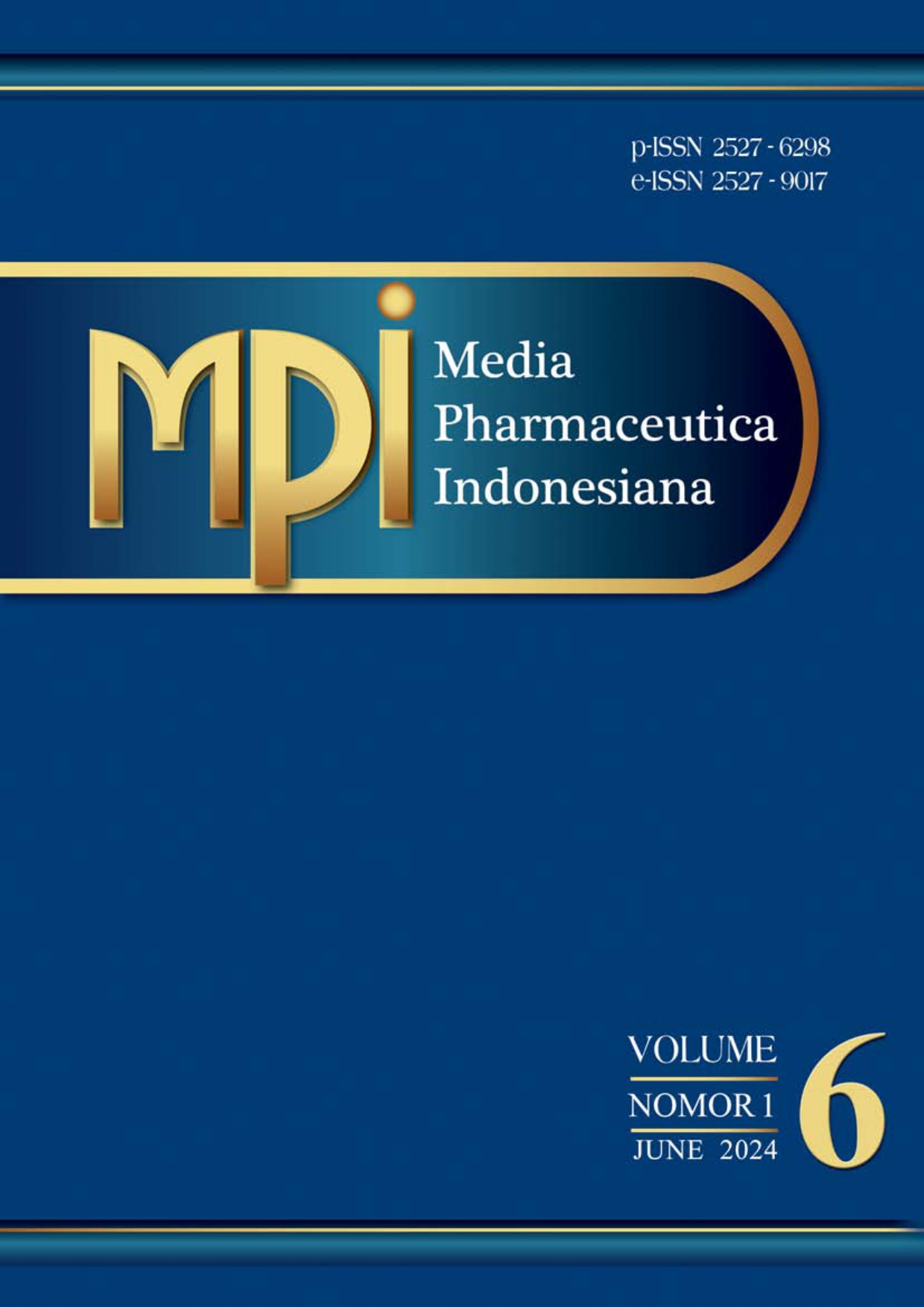Senyawa Metabolit Sekunder dan Aktifitas Afrodisiak Ekstrak Etanol Cabe Jawa (Piper retrofractum Vahl) secara In Silico
 Abstract Views:
994 times
Abstract Views:
994 times
 PDF Downloads:
678 times
PDF Downloads:
678 times
Abstract
Disfungsi ereksi merupakan salah satu masalah seksual yang paling umum terjadi pada pria. Obat yang tersedia di pasaran dapat digunakan untuk mengatasi masalah ini, tetapi penggunaan obat tersebut seringkali menimbulkan efek samping yang tidak diinginkan. Penggunaan bahan alami sebagai alternatif pengobatan semakin populer, salah satunya yaitu ramuan berbahan cabe jawa (Piper retrofractum Vahl). Cabe jawa diketahui memiliki berbagai macam metabolit sekunder yang memiliki peran sebagai bioaktif diantaranya aktivitas afrodisiak. Cabe jawa diekstraksi dengan etanol 96% menggunakan metode maserasi dan dianalisa dengan menggunakan LC/MS untuk mengidentifikasi metabolit sekunder yang terkandung pada cabe jawa. Sebanyak sepuluh metabolit sekunder terdeteksi yaitu Salsolinol, Quercetin, Caffeoyl putrescin, Diferuloyl putrescine, Feruloyl tyramine, Hydroxychloroquine, Tetrahydropapaveroline, Piperine, N-Oleyl-Leucine, dan Capsaicin. Selanjutnya dilakukan uji in silico terhadap masing metabolit yang diketahui dengan ligan senyawa sildenafil sebagai pembanding terhadap aktifitasnya sebagai penghambat phosphodiesterase type 5 (PDE5) dengan protein PDB ID 2H42. Dari hasil uji in silico dengan teknik molecular docking diketahui bahwa piperin memiliki aktifitas sebagai penghambat phosphodiesterase type 5 (PDE5) dengan nilai energi ikat dan konstanta inhibisi sebesar -8,62 kkal/mol dan 0,485 uM, yang merupakan aktifitas terbaik dari sepuluh metabolit sekunder yang diketahui, namun aktifitas afrodisiak senyawa piperin ini masih lebih rendah dibandingkan dengan senyawa sildenafil.
Erectile dysfunction is one of the most common sexual problems in men. Drugs available on the market can be used to treat this problem, but the use of these drugs often causes unwanted side effects. The use of natural ingredients as an alternative treatment is increasingly popular, one of which is a herb made from chili jamu (Piper retrofractum Vahl). Metabolite profiling of the chili jamu plant turns out to be different depending on the location of growth. It is thought to result in differences in natural conditions and circumstances which result in differences in aphrodisiac activity. Cabe Jawa was extracted with 96% ethanol and analyzed using LC/MS. Ten secondary metabolites were detected namely Salsolinol, Quercetin, Caffeoyl putrescin, Diferuloyl putrescine, Feruloyl tyramine, Hydroxychloroquine, Tetrahydropapaveroline, Piperine, N-Oleyl-Leucine, and Capsaicin. In silico test was done using sildenafil as a control in the phosphodiesterase type 5 (PDE5) inhibitor and PDB ID 2H42 as protein. From the results of in silico tests, it was known that piperine had activity as a phosphodiesterase type 5 (PDE5) inhibitor with binding energy and inhibition constant values of -8.62 kcal/mol and 0.485 uM.
Downloads

This work is licensed under a Creative Commons Attribution-ShareAlike 4.0 International License.
Articles published in MPI are licensed under a Creative Commons Attribution-ShareAlike 4.0 International (CC BY-SA) license. You are free to copy, transform, or redistribute articles for any lawful purpose in any medium, provided you give appropriate credit to the original author(s) and MPI, link to the license, indicate if changes were made, and redistribute any derivative work under the same license.
Copyright on articles is retained by the respective author(s), without restrictions. A non-exclusive license is granted to MPI to publish the article and identify itself as its original publisher, along with the commercial right to include the article in a hardcopy issue for sale to libraries and individuals.
By publishing in MPI, authors grant any third party the right to use their article to the extent provided by the CC BY-SA license.

 DOI:
DOI:










